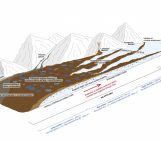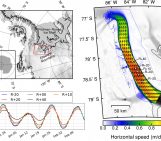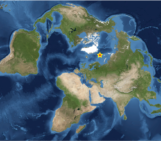Glaciologists often undertake fieldwork in remote and difficult to access locations, which perhaps explains why they happily travel to similar locations to attend meetings and workshops. The Karthaus Summer School, which focuses on Ice Sheets and Glaciers in the Climate System, is no exception. The idyllic village of Karthaus, located in the narrow Schnalstal valley in Südtirol (Italy), has been hosting this 10-day glaciology course nearly every year since 1995. In September, an international crowd of some 30+ PhD students and postdocs, and 11 lecturers assembled in Karthaus for the 2017 edition of this famous course, for an intensive program of lectures, food, some science, more food (with wine!), and lots of socialising.
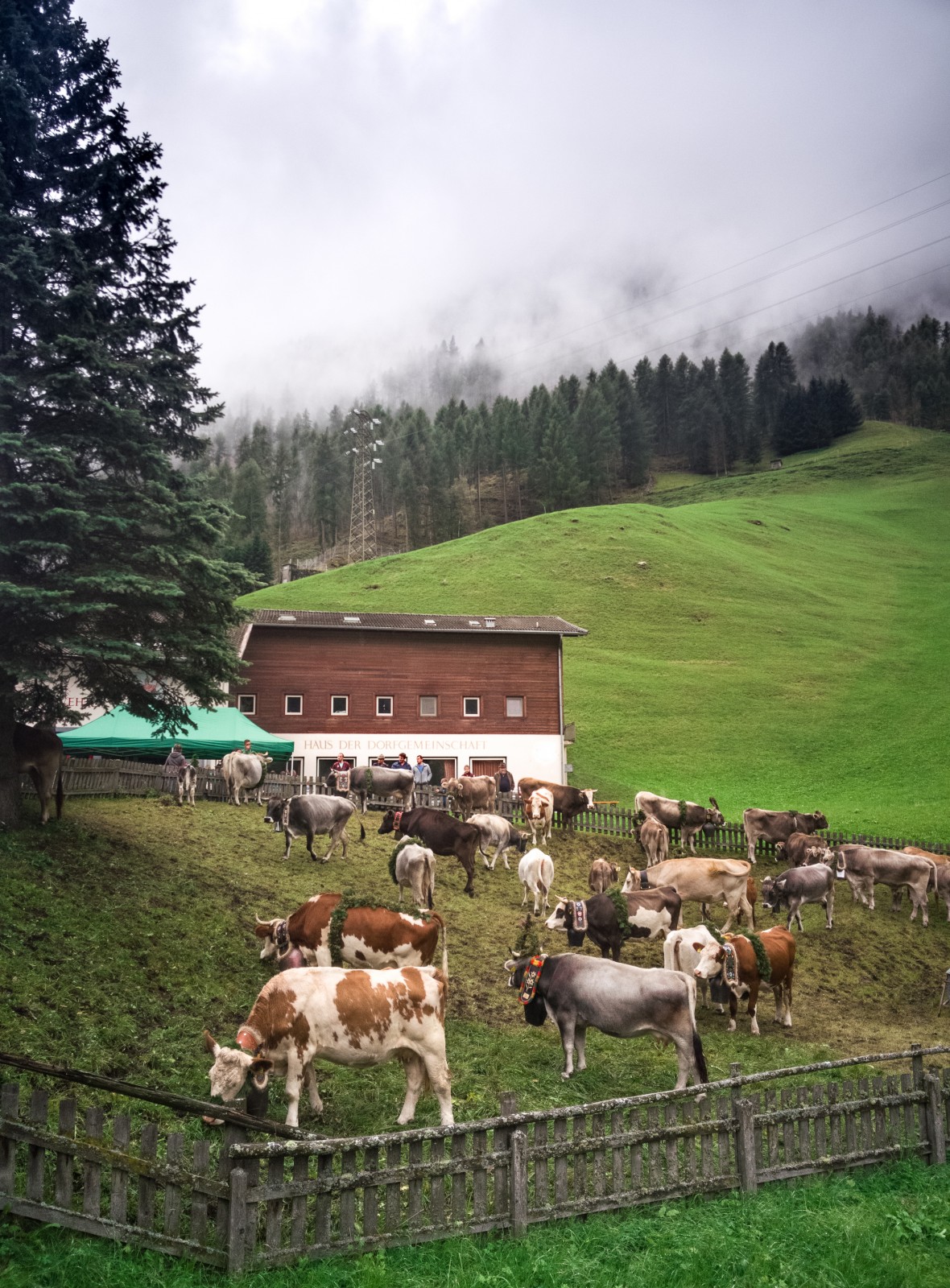
The lecture theatre with a backdrop of green hills, on the day the cows came down from the hills [Credit: D. Medrzycka].
The morning sessions
A typical morning of the course involved four hours of lectures, which covered a wide range of topics including continuum mechanics, thermodynamics, ice-ocean interactions, ice cores, geophysics, and geodynamics, with a special focus on numerical modelling and its applications for investigating ice-climate interactions. The lectures covered fundamentals processes, their applications and limitations, and current knowledge gaps for a wide range of complex concepts related to ice dynamics. All our lecturers happily answered our (many) additional questions during the coffee and cake breaks, enjoyed in the fresh mountain air outside the lecture theatre.

The biggest challenge was not the group work itself, but trying to not get distracted by the sun and the hills surrounding us [Credit: V. Zorzut].
The afternoon sessions
After a three-course lunch, we spent the afternoon sessions applying the theory learned in the morning lectures. The group projects were designed to get us to go into more detail on certain topics, and work on real-world applications for specific research problems. We presented the results of our work at the end of the course during a 15 minute group presentation. For those who could afford a bit of free time after these sessions, the rest of the afternoon could be spent either hiking or trail running in the steep hills overlooking the village (trying to beat I. Hewitt’s time up Kruezspitze), playing football, chilling in the sauna, or catching up on some sleep before dinner.
The evenings
Everyone who has ever attended the Karthaus course mentions the food, complementing both the quality and (legendary) quantity of it. Every evening, we were served a memorable five course meal accompanied by generous amounts of local wine. Dessert was followed by musical entertainment, with inspired performances by Frank Pattyn on the piano. On the last evening, Frank was accompanied by Johannes Oerlemans who treated us to two of his original tango arrangements on the guitar, followed by a passionate rendition of Jacques Brel’s Le port d’Amsterdam by our own Kevin Bulthuis (vocals). We wrapped up each day of the course in the local bar, socialising, playing card games, sampling the local beers, and making our way through the many different flavours of schnaps and grappa. Big thanks to the owners, Paul and Stefania Grüner, and staff (with a special shout-out to Hannes) of the Goldene Rose Hotel, and the village of Karthaus, for taking great care of us!
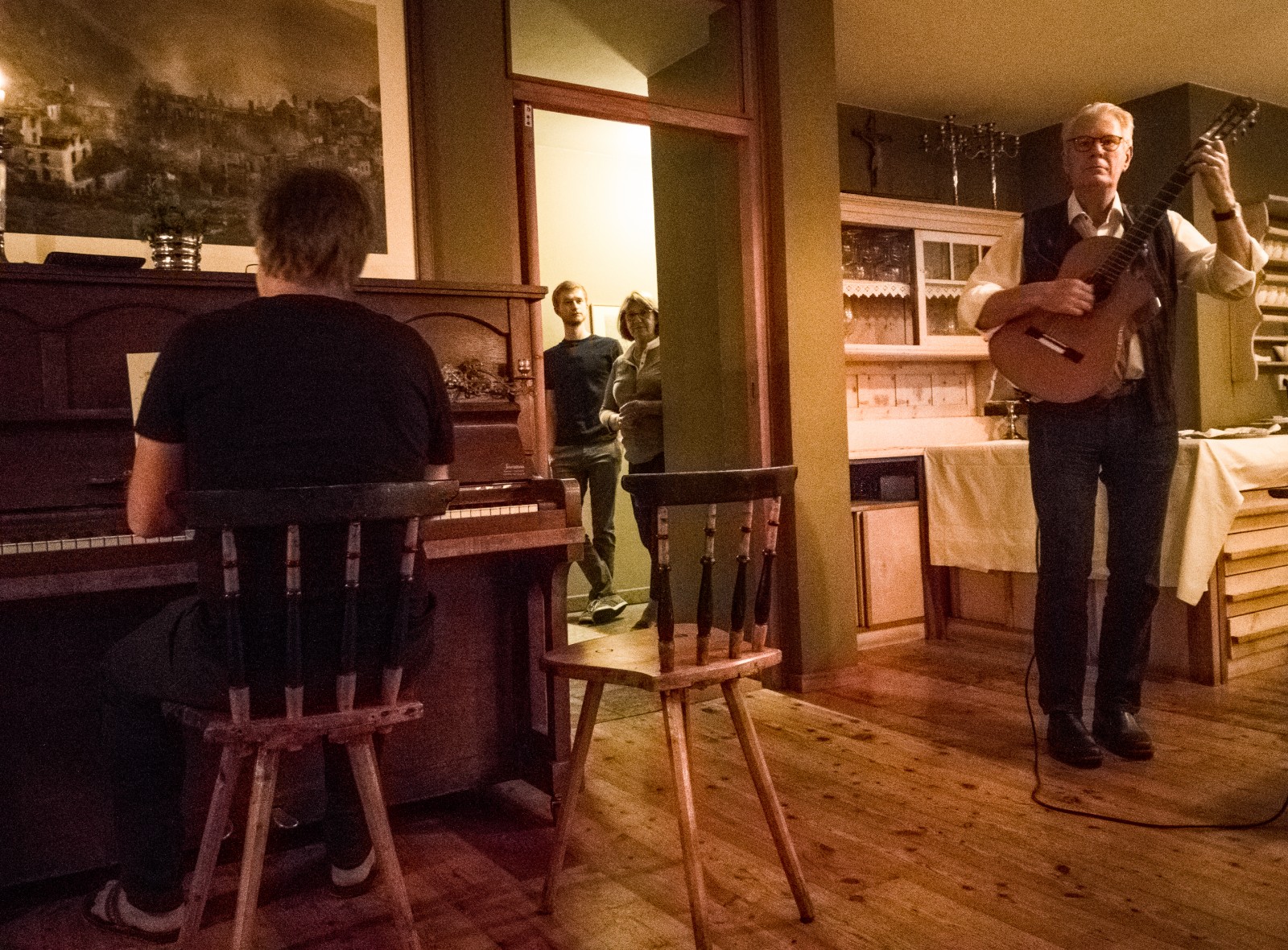
Frank Pattyn (piano) and Johannes Oerlemans (guitar) performing an original tango arrangement [Credit: D. Medrzycka].
Out and about
On the penultimate day of the course the group headed to a number of glaciers in the Ötztal Alps. The excursion, which happened to take place on a perfectly cloudless day, gave us the opportunity to observe first hand the changes affecting glaciers in the region, and the impact of these retreating ice masses on the landscape and humans inhabiting it. It also provided a much needed break from the intense week! After walking down the ski slopes of the Hochjochferner, a small valley glacier accessible by cable car from Kurzras, we stopped to enjoy the sun and have lunch at the Schöne Aussicht (Bellavista) hut (2845 m a.s.l.). Those with more energy scrambled up to the ridge running along the Italian/Austrian border (3270 m a.s.l.), through at times knee-deep snow, to take a peak at the Hintereisferner, a valley glacier on the Austrian side of the border. Four of us continued on along the ridge, and by chance visited the laser scanner (LiDAR) system operated by researchers from the University of Innsbruck, used to monitor changes in surface elevation on the glacier.

Standing on the ridge running along the Italian/Austrian border. View onto the Hintereisferner [Credit: D. Medrzycka].
Final thoughts
The 10 day course was certainly an intensive (and intense) experience, and I would recommend it to all glaciology students without reservations, whether they are looking for a basic introduction to ice dynamics, or aiming to fill a few knowledge gaps. Whilst some of the topics covered in the course were only remotely related to my own PhD research (and far out of my comfort zone!), the lectures and project work forced me to think in alternate ways. Although I may have finished the course with more questions than I had at the start, I now know where to go look for the answers!
A big part of the experience was without a doubt the social aspect of the course. Between the never ending and excellent food (as a result of which some of us developed “food babies”), and the long evenings at the local bar (resulting in increasing amounts of sleep deprivation), there were plenty of opportunities to talk science, gain new insights into our ongoing research, and discuss ideas for future projects. As with all great Summer Schools, one of the major perks was the opportunity to hang out with fellow students, expand our network of fellow researchers, and establish the groundwork for continued professional collaborations. Huge thanks to the convenor, Johannes Oerlemans, the village of Karthaus, and all the lecturers and fellow students for a memorable 10 days! I am looking forward to working with all of you in the future.
Edited by Morgan Gibson and Clara Burgard
 Dorota Medrzycka is a PhD candidate at the University of Ottawa (Canada), working with Luke Copland. Her research focuses on the dynamics of glaciers and ice caps in the Canadian High Arctic, with a focus on ice flow instabilities (including glacier surging). Her project combines field studies and remote sensing techniques to monitor ice motion, and gain insight into the factors controlling the variability in ice dynamics in the Canadian Arctic. Contact: dorota.medrzycka@uottawa.ca.
Dorota Medrzycka is a PhD candidate at the University of Ottawa (Canada), working with Luke Copland. Her research focuses on the dynamics of glaciers and ice caps in the Canadian High Arctic, with a focus on ice flow instabilities (including glacier surging). Her project combines field studies and remote sensing techniques to monitor ice motion, and gain insight into the factors controlling the variability in ice dynamics in the Canadian Arctic. Contact: dorota.medrzycka@uottawa.ca.



